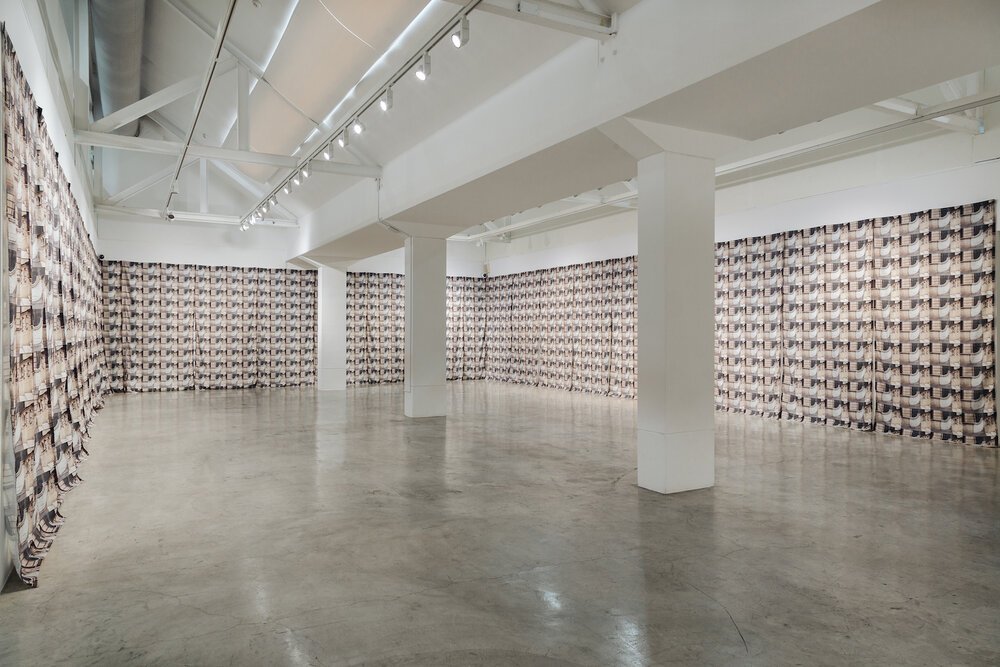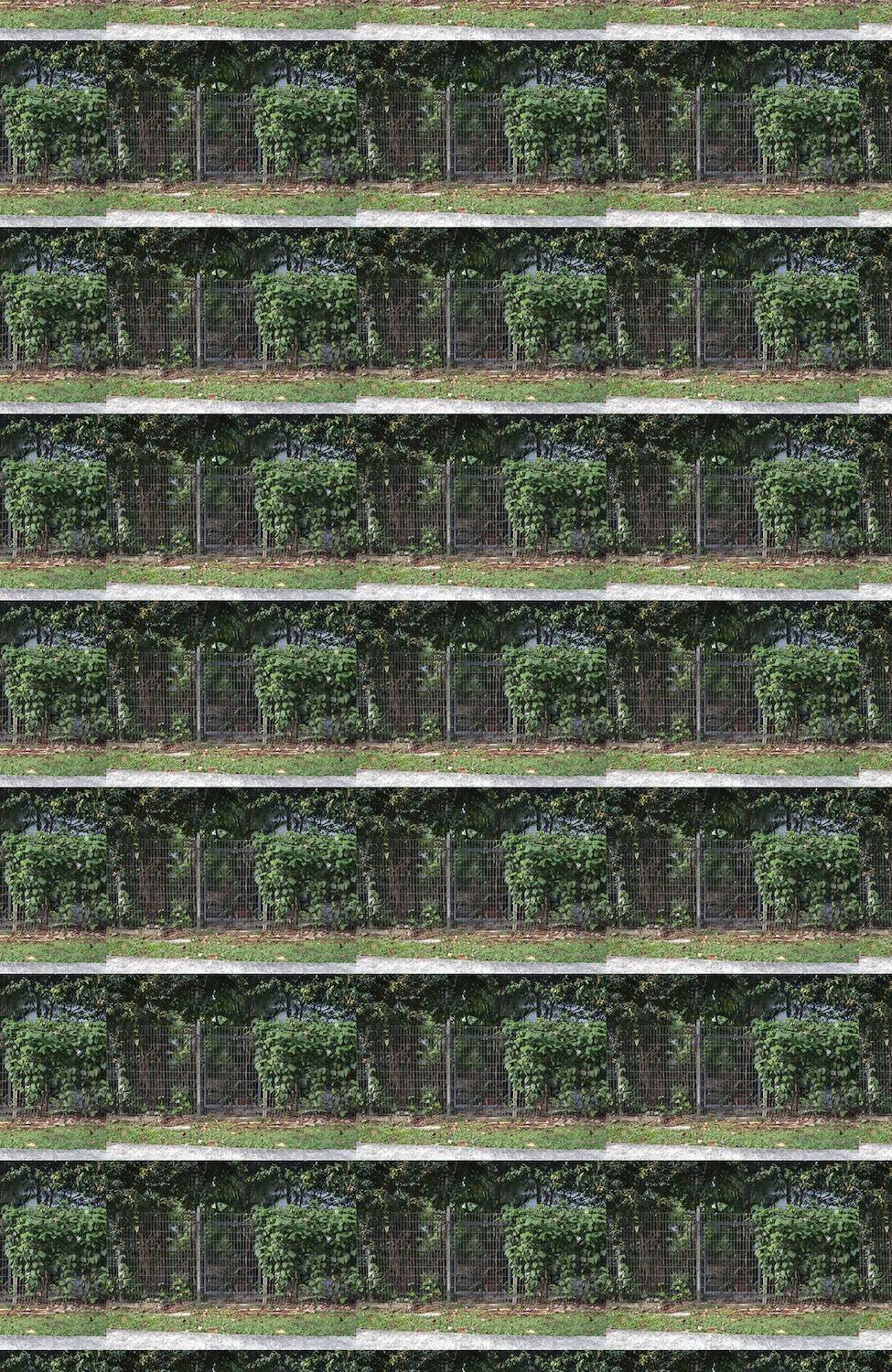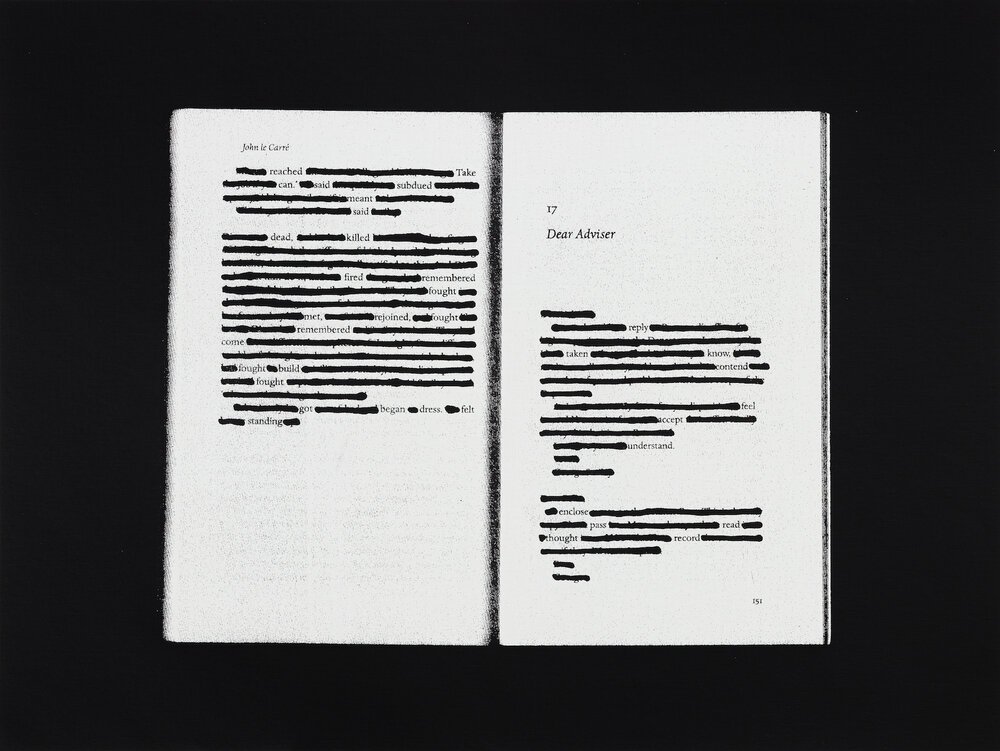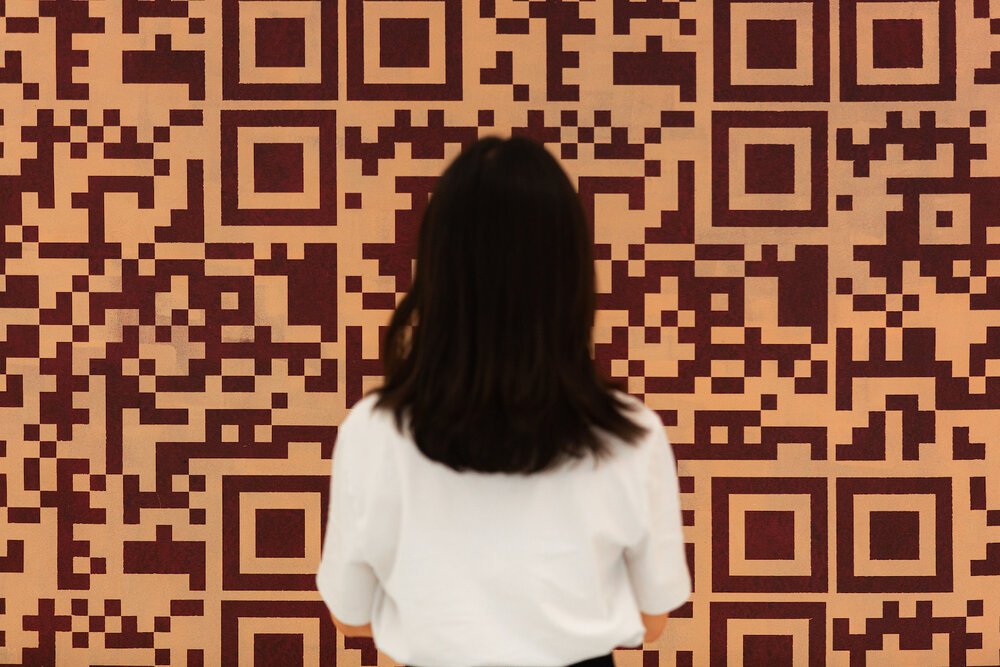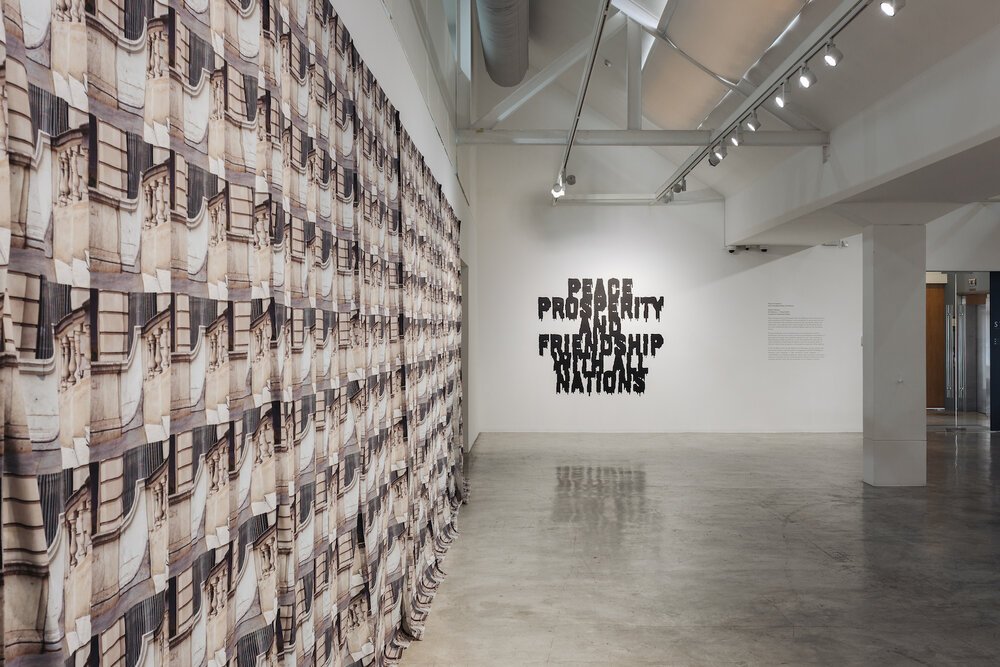Review of 'Peace Prosperity And Friendship With All Nations' at STPI Gallery
Heman Chong puts painting at the service of the mind
By Ian Tee
‘Heman Chong: Peace Prosperity and Friendship With All Nations’, 2021, exhibition view. Photo courtesy of STPI – Creative Workshop & Gallery, Singapore.
In an interview in 1946, the French-American artist Marcel Duchamp said, “I was interested in ideas, not merely in visual products. I wanted to put painting once again at the service of the mind.” It was a response to what he deemed to be purely “retinal art”, created only to please the eye. Instead, Duchamp’s aesthetic paradigm privileged intellectual expression and poetry in the artistic gesture. This notion of putting “painting at the service of the mind” is a good framework to approach Heman Chong’s first exhibition at STPI Gallery.
Provocatively titled ‘Peace Prosperity And Friendship With All Nations’, the show gathers a selection of recent work that reference everyday systems of governance. The title is also the name of a wall installation piece which opens the exhibition. The phrase’s absurd bombast is matched with camp, dripping typography reminiscent of horror comic book covers. Yet, the fact that this text is appropriated from an inscription on the Brexit 50-pence commemorative coin clouds one’s initial amusement with a sense of gravity. This expert swivelling between deadpan humour and precise critique of modern life is a key characteristic of Chong’s work.
“This expert swivelling between deadpan humour and precise critique of modern life is a key characteristic of Chong’s work.”
Heman Chong, ‘Foreign Affairs’, 2018, exhibition view. Image courtesy of STPI – Creative Workshop & Gallery, Singapore.
Heman Chong, ‘Foreign Affairs #36’, 2018, UV print on canvas, 200 x 130 x 3.8cm. Image courtesy of the artist and STPI Gallery.
In her curatorial essay, Kathleen Ditzig points to Chong’s “co-opt(ing) the material and small everyday registers of larger infrastructural systems” as a common thread throughout the exhibition. This strategy is most strongly captured in ‘Foreign Affairs’ (2018), a series of photographs depicting the backdoor of embassies at different locales. While some of these backdoors are nondescript, others awkwardly stand out from their surroundings. Regardless of their appearance, these are entryways into highly securitised spaces at the nexus of sovereignty and political power.
The ‘Foreign Affairs’ series is presented in two forms: as canvas paintings, and a curtain which envelops the central gallery. In both iterations, Chong repeats the photograph until it covers the printed surface from edge to edge. The effect produced is deeply unnerving, as if putting the viewer in a paranoiac position of observing endless closed-circuit television screens. Chong describes them as “surfaces that hide other things”. The curtain installation also suggests an element of staging, with actors operating “behind the curtain”.
Heman Chong, ‘Monument to people we’ve conveniently forgotten (I hate you)’, 2008, installation view in ‘Countershadows (Tactics in Evasion)’, Institute of Contemporary Arts Singapore, LASALLE College of the Arts, 2014. Photo by Olivia Kwok.
At its best, Chong’s work elicits an immediate, visceral response. I recall a similar experience with Chong’s ‘Monument to the people we’ve conveniently forgotten (I hate you)’ (2008), consisting of one million black name cards that blanket the gallery floor. Both ‘Foreign Affairs’ and ‘Monument to…’ create charged scenarios by tapping into the viewer’s relationship with specific objects, spaces or symbols. Hence, rather than being prescribed by the artist, the interpretations one arrives at are often guided by the audience’s existing associations and unsaid social dynamics.
“Rather than being prescribed by the artist, the interpretations one arrives at are often guided by the audience’s existing associations and unsaid social dynamics.”
Heman Chong, ‘Circuit Breaker Paintings’, 2020, exhibition view. Image courtesy of STPI – Creative Workshop & Gallery, Singapore.
Heman Chong, ‘Call for the Dead, 2020, screenprint on linen, 46 x 61 x 3.8cm. Produced at STPI –Creative Workshop & Gallery. Image courtesy of the artist and STPI.
‘Heman Chong: Peace Prosperity and Friendship With All Nations’, 2021, exhibition view. Image courtesy of STPI – Creative Workshop & Gallery, Singapore.
Repetition is employed as a conceptual gesture across different bodies of work. The ‘Circuit Breaker Paintings’ (2020) are a suite of 56 canvases created during the COVID-19 lockdown in Singapore. Chong reworked old paintings and marked them with the ubiquitous boxed crosses, a motif used to demarcate safe distancing. Presented chronologically in rows of seven like a calendar, each piece is a record of the day it was made. In a way, the ‘Circuit Breaker Paintings’ visualise accumulated feelings of denial, boredom and anxiety experienced during the lockdown.
This ritualistic process is also evident in ‘Call for the Dead’ (2020), a monumental 83-part work produced in collaboration with the STPI workshop. It features pages from John le Carreé’s spy novel from 1961 by the same name, with its text systematically redacted to only leave behind verbs. This arduous intervention renders the book illegible, thus shrouding the characters’ actions in secrecy. Without further cues about this choice of reference, my engagement with the piece is met with a dead end. ‘Call of the Dead’ lacked the simplicity and conceptual elegance that made Chong’s other works effective. In this instance, the strategy of accumulation does not quite entail a sum greater than its parts.
‘Heman Chong: Peace Prosperity and Friendship With All Nations’, 2021, exhibition view. Photo courtesy of STPI – Creative Workshop & Gallery, Singapore.
Heman Chong, ‘Safe Entry (Version 2.0 - 2.7)’, 2020, acrylic on canvas, 200 x 130 x 3.8cm each. Photo courtesy of STPI – Creative Workshop & Gallery, Singapore.
Returning to Duchamp’s quote at the beginning, to put “painting at the service of the mind” is also to broaden one’s scope of vision and look at the expanded field of painting. In displaying images of sensitive locations or appropriating copyrighted material, the exhibition presents multiple instances of the genre seeping into systems of information and brushes with the law. Chong’s act of handpainting real QR codes in ‘Safe Entry (Version 2.0-2.7)’ (2020) manifests this relationship literally, as upon “viewing” the work through a QR code reader, one is directed to the artist’s ‘Ambient Walking’ video on Youtube. Painting becomes a porous interface for ideas and facets of contemporary life to pass through.
Heman Chong has the reputation of being an archetypal conceptual artist. Through this exhibition, one gains a deeper appreciation of his engagement with the painted surface and picture plane. ‘Peace Prosperity And Friendship With All Nations’ probes one to consider how painting does not only have the capacity to please the eye, but also the mind.
'Heman Chong: Peace Prosperity And Friendship With All Nations' is on view at STPI Gallery, from 20 February to 18 April 2021.


